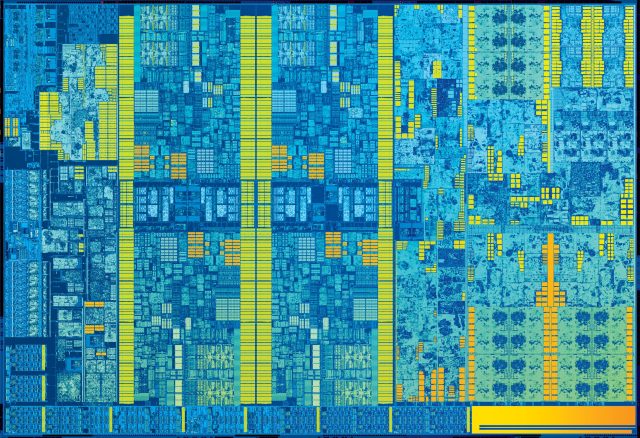
Intel Skylake die shot. (credit: Intel)
Researchers have found a way to run malicious code on systems with Intel processors in such a way that the malware can't be analyzed or identified by antivirus software, using the processor's own features to protect the bad code. As well as making malware in general harder to examine, bad actors could use this protection to, for example, write ransomware applications that never disclose their encryption keys in readable memory, making it substantially harder to recover from attacks.
The research, performed at Graz University of Technology by Michael Schwarz, Samuel Weiser, and Daniel Gruss (one of the researchers behind last year's Spectre attack), uses a feature that Intel introduced with its Skylake processors called SGX ("Software Guard eXtensions"). SGX enables programs to carve out enclaves where both the code and the data the code works with are protected to ensure their confidentiality (nothing else on the system can spy on them) and integrity (any tampering with the code or data can be detected). The contents of an enclave are transparently encrypted every time they're written to RAM and decrypted upon being read. The processor governs access to the enclave memory: any attempt to access the enclave's memory from code outside the enclave is blocked; the decryption and encryption only occurs for the code within the enclave.
SGX has been promoted as a solution to a range of security concerns when a developer wants to protect code, data, or both, from prying eyes. For example, an SGX enclave running on a cloud platform could be used to run custom proprietary algorithms, such that even the cloud provider cannot determine what the algorithms are doing. On a client computer, the SGX enclave could be used in a similar way to enforce DRM (digital rights management) restrictions; the decryption process and decryption keys that the DRM used could be held within the enclave, making them unreadable to the rest of the system. There are biometric products on the market that use SGX enclaves for processing the biometric data and securely storing it such that it can't be tampered with.